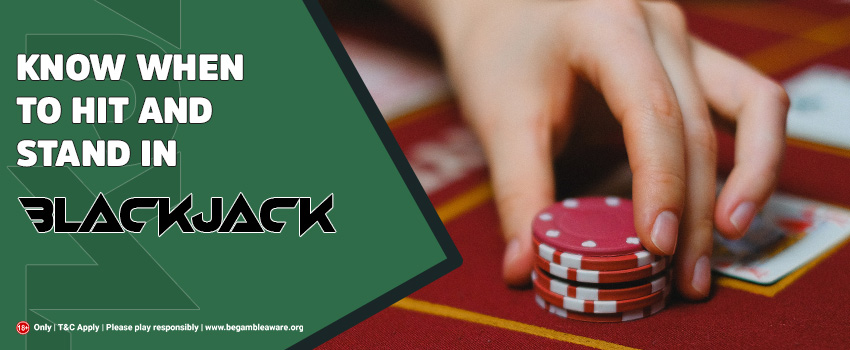
While Blackjack comes with different elective bet types, “Hit” and “stand” are the two basic moves that are mandatory in the game. And as a Blackjack player, you need to understand these moves to play the game effectively.
So, here’s an article that looks at everything you need to know about the Blackjack hit or stand betting options. Keep reading!
Understanding hit and stand in Blackjack
Whether you play Blackjack in a land-based gambling venue or at online casinos, there are two basic moves for you to make – to hit or to stand. While experienced players know and are used to hitting and standing in Blackjack, many novice players don’t have complete knowledge of these concepts. So, here’s a short explanation for those who don’t know.
Just like Roulette games, the basic rules of Blackjack are pretty easy to get started. In Blackjack, your main aim as a player is to form a hand whose value is exact 21 or as close to it as possible. So, if the value of your Blackjack hand isn’t good, you request an additional card from the dealer. And this is known as hitting in Blackjack. On the other hand, standing in Blackjack means you are content with your hand value and don’t want to take any extra cards.
Knowing when to hit or stand in Blackjack is crucial if you want to play Blackjack effectively. Also, it’s an important aspect of the basic Blackjack strategy that can help you reduce the house edge. Just note that while the notion of hitting or standing in Blackjack may seem simple, it takes practice and sound judgement to know when to go with the right option.
When to hit in Blackjack
If the value of your Blackjack hand is 8, you must opt to use the hit option. This is because a good portion of the Blackjack card deck is made up of 10-valued cards. So, the chances of you forming a hand whose value is close to 21 or exact 21 are pretty high.
Another instance when you might want to choose to hit is when the dealer has a high card and the total value of your hand is 8. While it may not seem obvious at the first glance, the idea here is to just beat the dealer’s hand.
Some Blackjack players choose to hit when the dealer has a lower card and the value of their hand is 12 or 13, though it’s not recommended. As you’d guess, these hands are quite unlikely to win. But again, you never know when lady luck may favour you.
When to stand in Blackjack
Now that you know the basics of hitting in Blackjack, let’s have a look at the instances when you must go with the Blackjack stand option.
In general, you must stand if the total value of your hand is 17, 18, 19 or 20 in Blackjack. The reason behind this is that your chances of getting a high-value card in Blackjack are pretty good. And you don’t want to go bust just because you’ve drawn an extra card that makes the value of your hand go beyond 21.
That said, you must always keep an eye on hand totals that can be split. For example, if you get 10-10, 9-9, or 8-8 as your hand values, you can easily split them to make two good hands.
Besides hitting and standing, it’s also important to know the concept of soft and hard hands in Blackjack. So, let’s explore it in the next section.
Blackjack soft vs hard hands
If you remember your Blackjack basics, then you’d be knowing that the value of your Ace card in Blackjack can either be 1 or 11. But many Blackjack beginners would think about what it has to do with soft and hard hands in the game.
Well, if your hand has an Ace that can be counted as both 1 and 11 without going bust, then that hand is referred to as a soft hand. In contrast, you’ll have a hard hand if the value of your Ace card needs to be counted as 1 to avoid busting.
Conclusion
So, this was pretty much everything that you needed to know about Blackjack hit or stand betting options. Again, there’s no way to surely know when to hit or stand in Blackjack. As such, many Blackjack players take their knowledge of Blackjack hitting and standing and combine it with other things, such as using the Blackjack card counting strategy and opting for Blackjack Insurance.